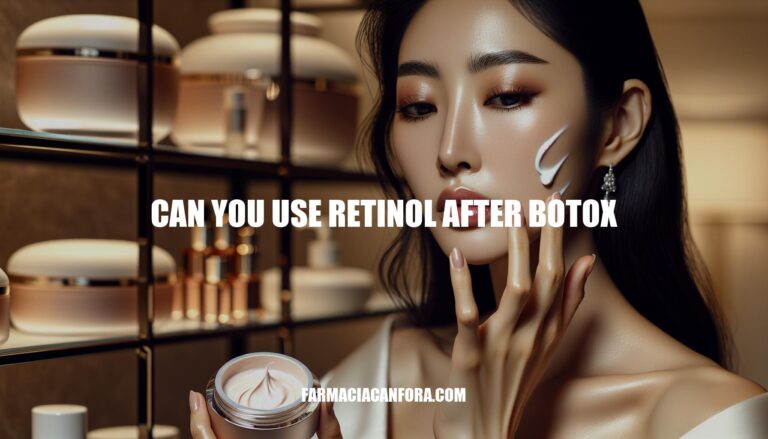


Skincare routines are essential for maintaining healthy, youthful skin. Among the most popular treatments are Botox and retinol. Botox smooths out wrinkles by relaxing facial muscles, while retinol, a vitamin A derivative, promotes cell turnover and collagen production, reducing fine lines and improving skin texture. But can you use retinol after Botox? Let’s explore this important question.
Retinol is a form of vitamin A commonly used in skincare products. It offers several benefits for the skin, including increasing cell turnover, unclogging pores, and boosting collagen production. These actions help reduce the appearance of fine lines, wrinkles, and acne, giving the skin a smoother and more youthful look.
How Retinol Works: Retinol penetrates the skin and accelerates cell turnover, which helps shed dead skin cells and promote the growth of new ones. It also stimulates collagen production, improving skin elasticity and reducing signs of aging.
Why It’s Popular: Retinol is favored in skincare due to its effectiveness in addressing multiple skin concerns, such as aging, acne, and sun damage. Its ability to improve skin texture and tone makes it a versatile and sought-after ingredient.
Can You Use Retinol After Botox?: Yes, you can use retinol after Botox, but it’s recommended to wait at least 24 hours post-treatment before applying retinol to avoid irritation. Always consult with your dermatologist for personalized advice.
Botox is a cosmetic treatment that uses botulinum toxin type A to temporarily paralyze muscles. This helps reduce the appearance of wrinkles and fine lines. It’s commonly used on areas like the forehead, around the eyes (crow’s feet), and between the eyebrows.
How Botox Works: Botox blocks nerve signals to the muscles, preventing them from contracting. This relaxation of the muscles smooths out the overlying skin, reducing wrinkles and fine lines.
Can you use retinol after Botox? Yes, but it’s recommended to wait 2-3 days after Botox injections before resuming retinol to avoid irritation and ensure the Botox settles properly.
Can you use retinol after botox? Yes, but timing is crucial.
Before Botox: Stop using retinol at least 2 days before your appointment to minimize irritation.
After Botox: Wait 2-3 days before reintroducing retinol into your routine. Some experts suggest waiting 5-7 days to ensure optimal healing.
Start Slow: Begin with a low concentration and gradually increase usage to avoid irritation.
Hydrate: Use a gentle, non-comedogenic moisturizer to keep your skin hydrated.
Following these guidelines helps ensure both treatments work effectively without causing unnecessary irritation.
Using retinol too soon after Botox can lead to several potential risks and side effects:
It is crucial to follow professional advice to avoid these issues. Professionals can provide personalized guidance on the appropriate timing and usage of retinol after Botox, ensuring optimal results and minimizing risks. Always consult with your healthcare provider to tailor your skincare routine to your specific needs.
Can you use retinol after botox? Yes, but timing and professional guidance are key to safe and effective use.
Can you use retinol after Botox? Yes, but timing and technique are crucial. Experts recommend waiting 2-3 days after Botox before reintroducing retinol to allow the injection sites to heal and reduce irritation risk. Here are some tips for integrating retinol into your post-Botox skincare routine:
By following these guidelines, you can safely enjoy the benefits of both Botox and retinol in your skincare regimen.
In conclusion, timing and professional guidance are crucial when using retinol after Botox to avoid irritation and ensure optimal results. It’s recommended to wait 2-3 days after Botox injections before resuming retinol use, starting with a low concentration and gradually increasing it as needed.
Gentle formulas and hydrating moisturizers can also help minimize side effects. By following these guidelines, you can safely incorporate both treatments into your skincare routine.
Yes, but timing is everything.